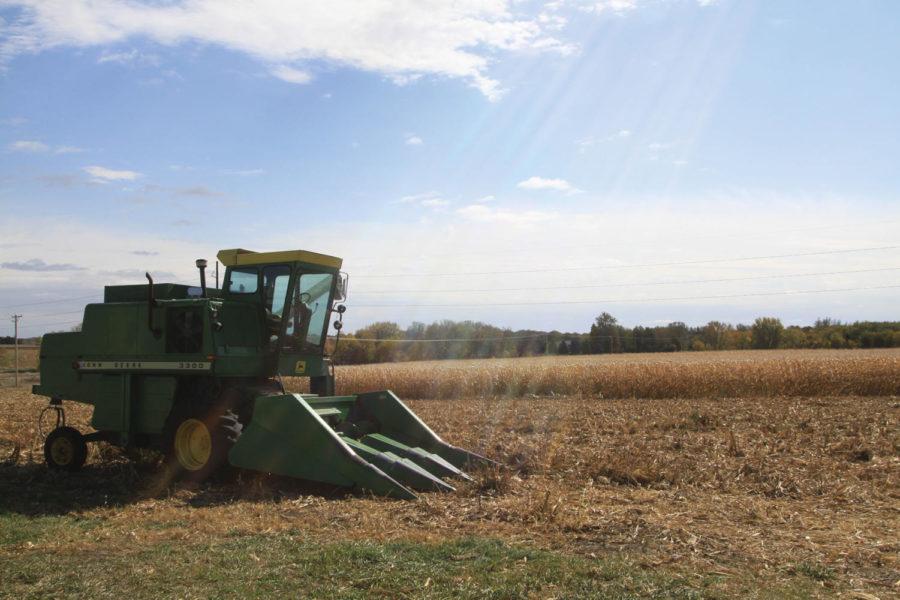Researchers receive grant to study biochar
Photo: Shane Tully/Iowa State Daily
Latest government crop yield predictions give grain farmers optimism as the harvest season reaches its peak in Iowa, corn and soybean experts say at Iowa State University this week.
September 3, 2015
Researchers at Iowa State have been awarded nearly $2 million for research on the integrated pyrolysis of biochar systems.
Biochar is a product used on soils to return nutrients to the soil, which are removed when biomass is harvested for bioenrgy and aid in sequestering carbon that otherwise would be released into the atmosphere as carbon dioxide as plants decompose.
The grant, provided by the Global Climate and Energy Project at Stanford University, will provide funding for three years.
“Biochar is one of three co-products produced when biomass feedstocks such as corn stocks and cobs are heated without oxygen, a process known as pyrolysis,” said David Laird, professor of agronomy and chief researcher for the project.
The other two products produced are bio oil and syngas, both of which can be used as fuel or to produce other products, Laird said.
Biochar has been a theoretical probability for Laird since the 1990s, but in 2005 the probability became a reality.
“In 2005 we realized there was a possible synergism between biochar and bioenergy,” Laird said.
When the corn stocks and cobs are heated along with different feedstocks, such as corn stover, food waste or wood, different types of biochar will be produced. Combine the different feedstocks with different heating temperatures and you can get billions of different types of biochar, Laird said.
“As a general rule, the higher the temp [of the pyrolysis process used to produce the biochar] the more stable the biochar is in soils,” Laird said.
The more stable the biochar is the longer it can stay in the soil. Generally, the biochar will stay in the soil for hundreds to thousands of years, Laird said.
A major product of the research will be a biochar model which will be incorporated into the Agricultural Production System sIMulator by Sotirios Archontoulis, assistant professor of agronomy, and Fernando Miguez, assistant professor of agronomy. The model will allow the researchers to simulate the impact on crop yields and the environment when they place a certain type of biochar into different soil types. The model also allows the researchers to test the biochar in different climates, Laird said.
Economists can use the results from the simulator model to find the best location to start a biochar industry.
“The place where it would make the most sense to put the industry would be here in the corn belt,” said Dermot Hayes, professor of economics.
The biochar has proven to have bigger impacts on poor soil, such as soil destroyed by a tornado, than higher quality soils.
“On every farm, there are parts where you lose money,” Hayes said. “The char can improve the quality [of the soil] for a long period of time.”
Hayes predicts farmers could see the value of their farm improve by 10 to 15 percent when soil quality increased using biochar.
When all of the research is complete, Laird and his team will look into the possible benefits and setbacks that could come from the industry. They will look at how big the climate change impact could be, and where it makes the most economic and environmental sense to put the first plant.
“This is just one piece of a larger research agenda,” Laird said.







